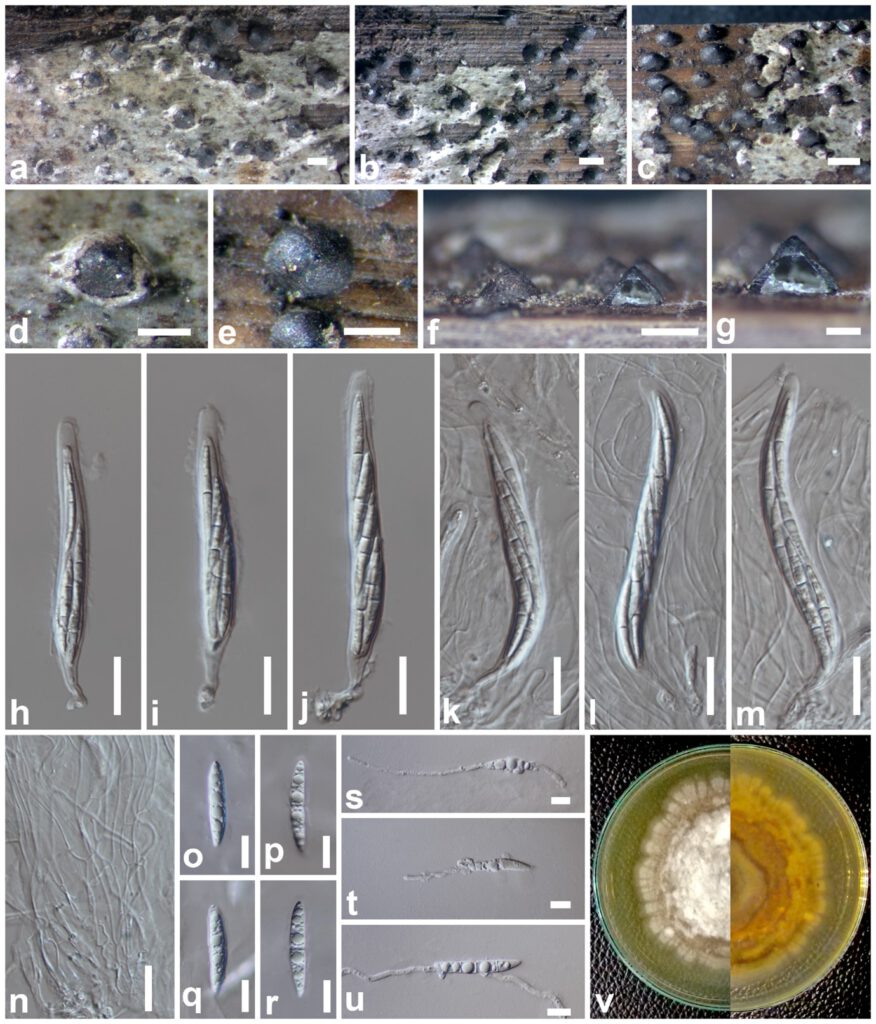Pteridiospora arengae Konta & K.D. Hyde. sp. nov.
MycoBank number: MB 559675; Index Fungorum number: IF 559675; Facesoffungi number: FoF 10820
Etymology: Refers to the host genus Arenga.
Holotype: MFLU 15–0035.
Saprobic on dead petioles of Arenga pinnata. Sexual morph: Ascostromata 290–370 μm high, 560–820 μm diameter (x̅ = 325 × 690 µm, n = 20), scattered, solitary, erumpent to superficial, mammiform to conical , visible as numerous, raised, black dome-shaped areas on host surface, carbonaceous, ostiolate. Ostiole central, with pore-like opening. Peridium 40–65 µm wide (x̅ = 57 µm, n = 20), of unequal thickness, poorly developed at the base, composed of dark brown to black, textura angularis. Pseudoparaphyses 1.04–1.64 μm wide (x̅ = 1.34 µm, n = 20), hyaline, numerous, filiform, trabeculate pseudoparaphyses. Asci 80–155 × 9–15 µm (x̅ = 115 × 12 µm, n = 20), 8-spored, bitunicate, cylindrical, apically rounded, short pedicellate with club-like shape, apically rounded with a minute ocular chamber. Ascospores 28–38 × 3.5–7.5 µm (x̅ = 32 × 5.5 µm, n = 20), overlapping bi-seriate, ellipsoidal to sub-fusoid, 1(–3)-septate, hyaline, constricted at the septum, with rounded to acute ends, guttules, surrounded by a thick mucilaginous sheath. Asexual morph: Undetermined.

Fig. XX. Pteridiospora arengae (MFLU 15-0035, holotype). a–c Ascostromata on host. d, e Close-up of ascostroma. f, g Vertical section of ascostromata. h–m Asci. n Pseudoparaphyses. o–p Ascospores. s–u Germinated ascospores. v Colony on MEA. Scale bars: a= 1,000 μm, b–f = 500 μm, g = 200 μm, h–n = 20 μm, o–u = 10 μm.
